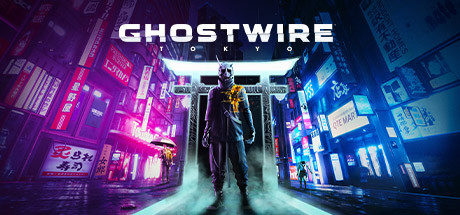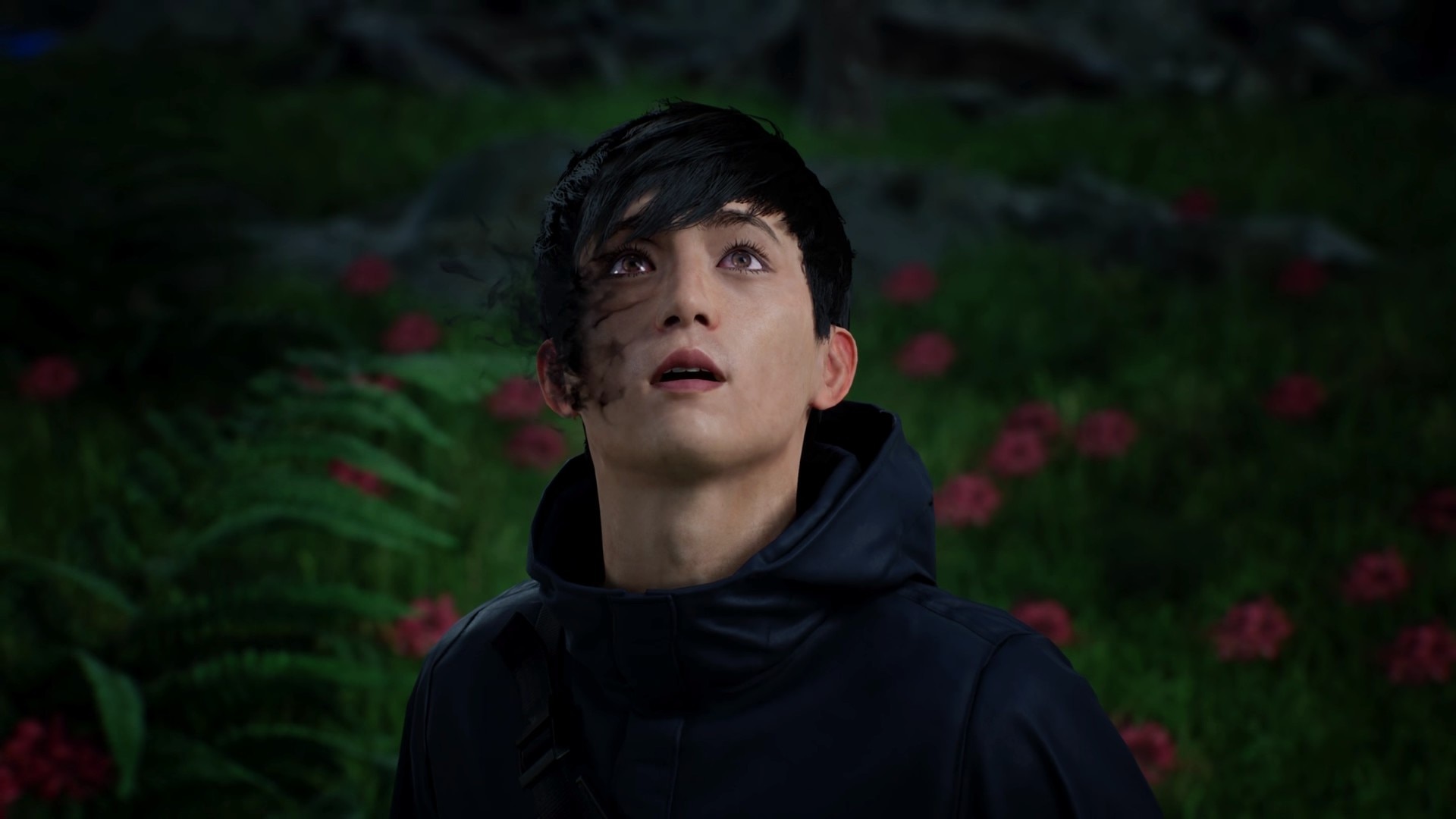
Ghostwire: Tokyo
Ghostwire: Tokyo is a supernatural open-world exploration / action game that takes place in a fictional Shibuya (a municipality of Tokyo) whose inhabitants have all mysteriously vanished after the city has been overtaken by malevolent ghostly entities.

You play as Akito, a young man who wakes up in the middle of the iconic Shibuya crossing in the aftermath of a major car crash. With Akito being at the edge between life and death, an unfamiliar spirit suddenly enters his body, preventing him from passing away, thus allowing him to remain connected to this world and to witness for the first time the parade of “Visitors” unleashing a catastrophic fog that wipes out most of Tokyo’s population. The Visitors are an army of ghastly beings that came to invade the city with the goal of separating people’s spirits from their own bodies and collecting them for nefarious purposes that are revealed a bit later in the game. Somehow Akito manages to outlive this event by staying hidden from their sight, thus becoming the sole survivor of this cataclysm.

While reluctant at first about teaming up, Akito and the entity that inhabits him (called “KK”) soon discover that they both seek revenge on a common enemy and that they ultimately pursue the same goal: stopping the enemy attack on Tokyo. The actual orchestrator of the invasion and thus the main antagonist of the game, Hannya, is the target that KK and his team used to pursue in his former life as a cop, but also the one who kidnapped Akito’s hospitalized sister to use her as a catalyst in an occult ritual. KK needs a body in order to achieve his purpose of stopping Hannya, while Akito needs to stay alive long enough to save his sister from Hannya’s hands. As the game progresses, the duo starts warming up to each other and eventually end up developing a strong bond based on mutual trust.

By accepting KK as his inhabitant, Akito can use KK’s supernatural powers to fight off evil. These are ethereal spells based on the wind / fire / water elements, used as basic attacks, but they can also be charged up for increased damage or range. Apart from these 3 main spells, there’s not much else to employ during a fight. Akito can also use a bow (with a very limited amount of arrows), but it also requires to be charged up first before releasing the shot. There are a few talisman types – one-time consumables that act as location-targeted spells (for example, a mass stun, or something that produces a bush you can hide into). The talismans as well as the arrows can’t be picked up from the environment (with very rare exceptions for arrows), therefore they have to constantly be replenished by buying them from one of the many shops. The three main spells have an ammunition system, and you replenish their charges by destroying glitchy objects in the game world.

While other reviews complain that the fighting system is rather minimalistic, this was one of my motivations for picking up the game. I wanted to play something with rather uncomplicated fighting mechanics, so I can enjoy it without the stress of mashing several buttons in a row, trying to get those combos up and running. And Ghostwire: Tokyo provided that relaxing experience I was expecting, although I have to admit that in some areas things got a bit tougher when a bunch of piled up enemies kept stunning and interrupting Akito’s spell casting. Overall the fighting aspect of the game felt fairly easy, without being completely unchallenging.

Ghostwire: Tokyo is more of a collectathon rather than anything else. I’ve never seen more collectibles in a game than here. Not only that there are several kinds of them (with a few dozen items in each category), but take for example the requirement to gather 240.300 spirits in order to save them from being collected by Hannya. Apart from side missions or some other events that award you 500 – 1000 spirits, most of these are gathered in batches of 100. I’ll let you do the math, which will probably lead you to the same conclusion that I reached after 50 hours of running around for all these: that the game is more or less a completionism hell. Although designed in a way that allows you to pursue solely the main story (which by the way, takes around 6-10h in its bare form – as my rough estimate) and perhaps engaging yourself in minimal gathering actions, I found it pretty important to do the latter more extensively because a lot of these items will increase your spell charge capacity or allow you to unlock new skills. On the other hand, the enemies seemed to somewhat scale with my character, so in hindsight I would say that while the game lets you decide whether to first go for unlocks and upgrades to increase your damage output, it only confers a moderate advantage.

Having tons of collectibles in a game can seem frustrating for some. Especially if one wants to gather them all, it takes a lot of patience and repetitive actions. However, I didn’t mind it too much. What I did mind though was how hard the collectibles were to spot without a guide (and I am in awe of those who spent hours creating them). There’s a hotkey to highlight the silhouettes of the most important objects in a 50m area for a few seconds, so you will be pressing this very often to highlight your enemies or other beings from the shadowy world. Most of the highlighted items are the ones you can destroy for recharging your spells, and the collectibles you seek are typically very tiny, so even after hours of gameplay and learning by heart the possible shapes of the objects to charge your spells, I still found it completely useless for spotting collectibles, except at very close range.

The map is gigantic, leaving a lot of space for exploration. The amount of detail is astonishing, and the reconstruction of the city is absolutely remarkable. The streets are empty, devoid of people, which creates an eerie atmosphere, especially because the worn clothes left behind make it look like the bodies have all been swept away in an instant. Completely opposite of this stillness there’s the aliveness of the colorful lit-up billboards hanging on the buildings of a convoluted shopping plaza or on very tall office towers / apartment blocks, reminiscent of a once very active and crowded city. The atmosphere and the design of the world is in my opinion the strongest aspect of Ghostwire: Tokyo.

The game is considered to belong to the horror genre. As a person who is especially sensitive to anything that is scary or gives an uneasy feeling, I can assure you that it’s tremendously mild on that scale, even close to 0. Since the enemies explode into crystals when they are killed, there is no gore in the game. There are no jump scares and the enemy design is not frightening – Akito will mostly fight slenderman-like creatures, headless but cheerful schoolgirls or office clerks – nothing that can really give you nightmares. Some side missions will have you explore a haunted house, and unforeseen occult things happening there or the unexpected way the level shifts into something else can somewhat give you chills on the spine, but none of this is deeply daunting.

Both the enemies and the collectibles showcase Japanese folklore, however the story felt overall very predictable and generic, in a way that it didn’t seem to employ the Asian techniques of storytelling; not only that it has a lot of plot holes and inconsistencies, but overall it seemed to lack that indistinguishable Asian touch, even though it was developed by a Japanese studio.

With its exquisite visuals and detail-rich world, supernatural theme, and fairly relaxed combat, Ghostwire: Tokyo was all-in-all a great buy for me. I did expect more depth and cohesiveness from the story and would have liked a built-in collectible tracking system, but none of these things hindered my enjoyment too much. Overall, I loved the game as a whole.
